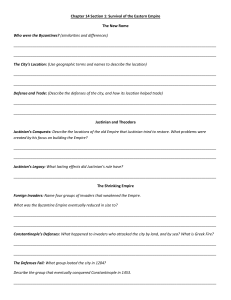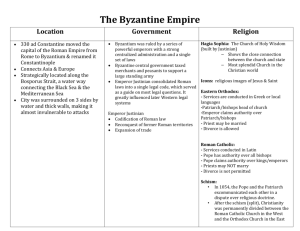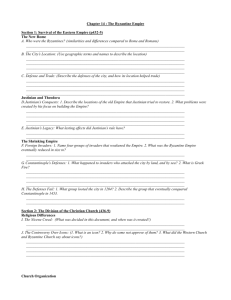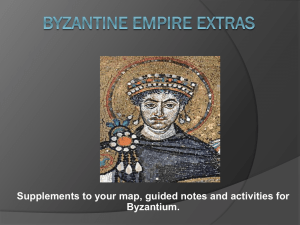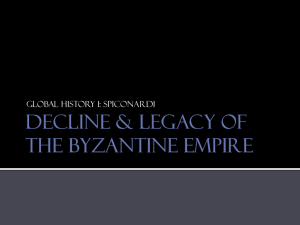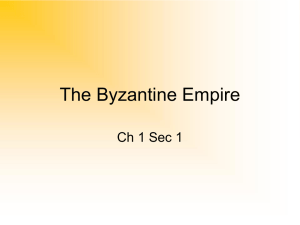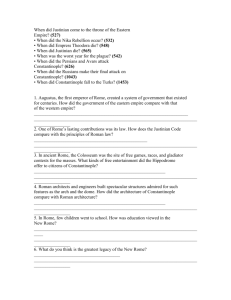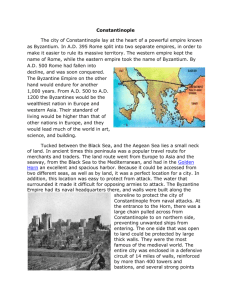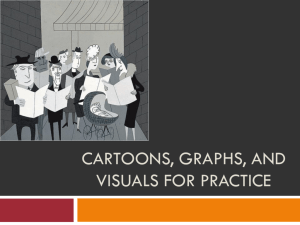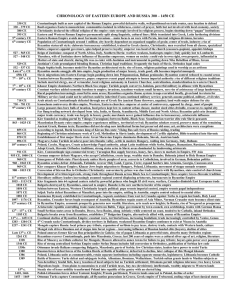Section 2
advertisement
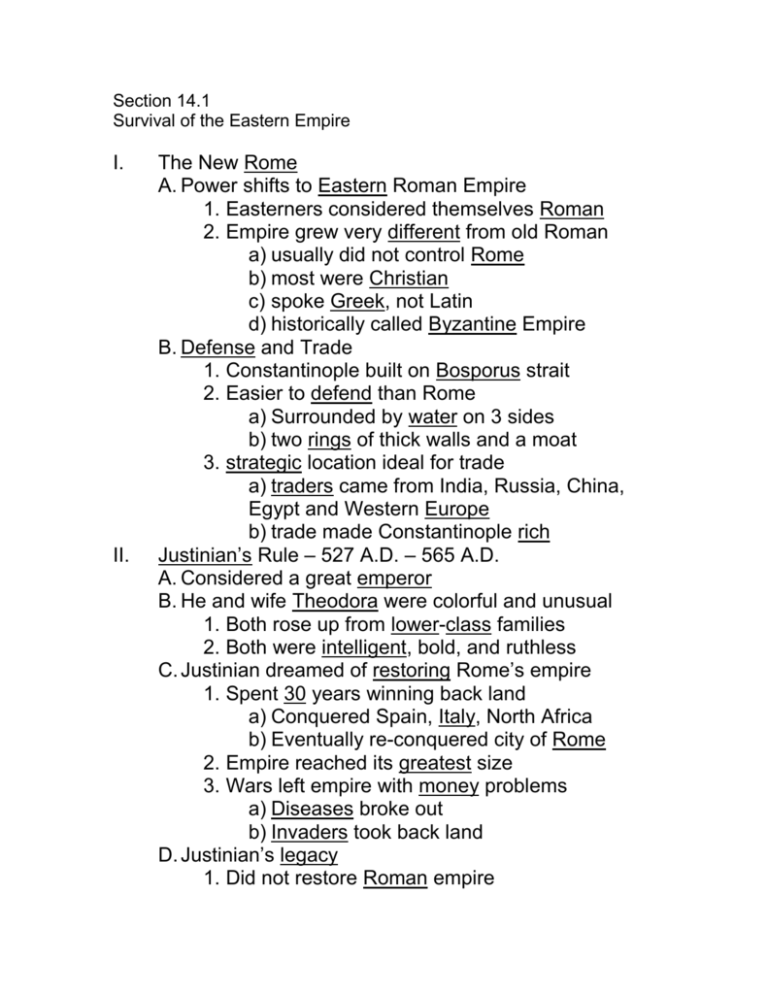
Section 14.1 Survival of the Eastern Empire I. II. The New Rome A. Power shifts to Eastern Roman Empire 1. Easterners considered themselves Roman 2. Empire grew very different from old Roman a) usually did not control Rome b) most were Christian c) spoke Greek, not Latin d) historically called Byzantine Empire B. Defense and Trade 1. Constantinople built on Bosporus strait 2. Easier to defend than Rome a) Surrounded by water on 3 sides b) two rings of thick walls and a moat 3. strategic location ideal for trade a) traders came from India, Russia, China, Egypt and Western Europe b) trade made Constantinople rich Justinian’s Rule – 527 A.D. – 565 A.D. A. Considered a great emperor B. He and wife Theodora were colorful and unusual 1. Both rose up from lower-class families 2. Both were intelligent, bold, and ruthless C. Justinian dreamed of restoring Rome’s empire 1. Spent 30 years winning back land a) Conquered Spain, Italy, North Africa b) Eventually re-conquered city of Rome 2. Empire reached its greatest size 3. Wars left empire with money problems a) Diseases broke out b) Invaders took back land D. Justinian’s legacy 1. Did not restore Roman empire III. 2. Built Hagia Sophia – central church 3. Created a code of laws for the empire The Shrinking Empire A. Byzantine Empire slowly falls over next 800 years 1. Germans took land in Europe 2. Slavic peoples invaded from the north 3. Muslim invaders a) Arabs take Syria, Egypt, and North Africa b) Turks seize much of modern Turkey B. Byzantines kept control of core empire 1. Greece and Western Turkey 2. Eventually only Constantinople C. Fall of Constantinople 1. Invaders often attacked the city a) stopped by walls on land b) Heavy chain across harbor protected sea c) Greek fire – Byzantine secret weapon 2. Crusaders took control in 1204 a) Crusaders looted and damaged city b) Byzantines eventually retook capital 3. Ottoman Turks attack in 1453 a) Ottoman’s used cannons to break walls b) Constantinople falls to Ottomans


